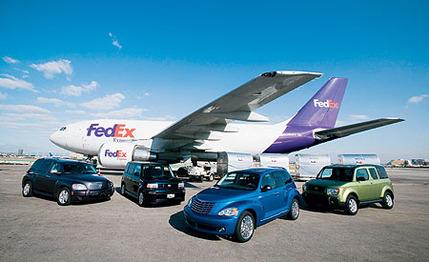
 Comparison Tests
Comparison Tests
For this test we've rounded up the unusual suspects. They're easy to spot -- small, boxy mobiles costumed up to be extraordinarily conspicuous in broad daylight, little contrarians rebelling against the blurring sameness of ordinary cars.
They're easy to spot, these rebels, but tricky to define, leading us to paraphrase the Supreme Court's definition of obscenity: We know 'em when we see 'em.
Arguably, Chrysler's PT Cruiser started it all in 2001. The original idea was to cloak the low-cost mechanicals of a compact Neon with a sweetly retro body that would appeal to everyone with eyes. Eye appeal, of course, is an idea as old as the design studio. Mazda MX-5 Miatas appeal to everyone with eyes, too. But the PT Cruiser's advantage was, and is, its carrying capacity, boasting room for up to five, or a terrific amount of cargo. Nearly 145,000 PT Cruisers rolled onto streets that first full year, almost nine times the Miata's numbers, and sales have remained solidly above 100,000 per year through 2004 (the most recent year with numbers).
Success draws imitators. There's no other way to explain the 2006 Chevrolet Me-Too Cruiser, er, HHR, a.k.a. Heritage High Roof. A 1949 Chevy Suburban sets the design mood here, we're told, for an upright four-door about seven inches longer than the Chrysler, but following the same formula -- the HHR is built on the low-cost Chevy Cobalt platform.
Cute is good, and it's also easy to understand. The tricky part about this group is that it includes two boxes that are avowedly anti-cute. The marketing idea is plausible enough: In a time when young folks rebel against their elders by piercing delicate body parts and displaying tattoos on regions of the epidermis usually left unseen, would there be a demand for cars that look as shocking as, say, a tongue studded with shiny metal?
Although Detroit has yet to screw up the courage to go shocking (leaving aside the Pontiac Aztek, of course), two Japanese makers are doing it good and hard. Honda's Element, a slab-sided box with the visual charm of a Brink's truck, was new for 2003 and sold just short of 60,000 units in 2004. It's derived from Honda's small, car-based CR-V sport-ute. With uncarlike ground clearance as standard equipment and all-wheel drive available, the Element is presented as the expeditionary vehicle for the young and restless, with seats that fold flat into beds for outback adventures and an interior you can wash out with a hose when you return.
Shocking, too, is the look of the Scion xB, at least at first. Is this a car or the box a car came in? But there's a sly smile in the abrupt contours, like a Mini infused with a double dose of yeast. Who imagined Toyota had such a sense of humor?
Americans are obviously amused by the xB, to the tune of 47,013 sold in 2004. When you find out the base price is $14,420, doubts may form. Priced like that, could the xB be a real car? Remarkably, it is, although its dimensions don't seem reassuring at first -- it's more than a foot shorter than the PT Cruiser.
The boxy silhouettes of this quartet promise more than passenger capacity, so we've paid extra attention to measuring the useful space inside, and to the folding and tumbling of seats to accommodate cargo.


Although we try to match identically equipped cars in our comparisons, we failed in this case. The Chrysler and Honda are automatics, against five-speed manuals in the Chevy and Scion. (All the contestants have five-speed manuals as standard equipment and four-speed autos optional.) The only PT Cruiser available for this test was the extra-cost GT, including a turbo 2.4-liter good for 230 horsepower, well over double the 103-hp output of the Scion, and more optional bright trim than all the others put together.
Can an everyday driver find happiness in a rebellious box? Short answer: You bet! But we'd be disappointed if you didn't go on to the long answer.